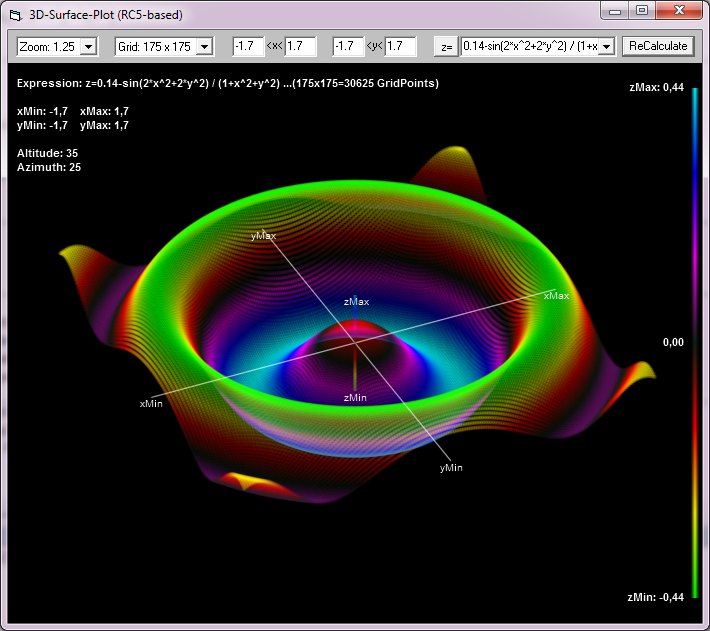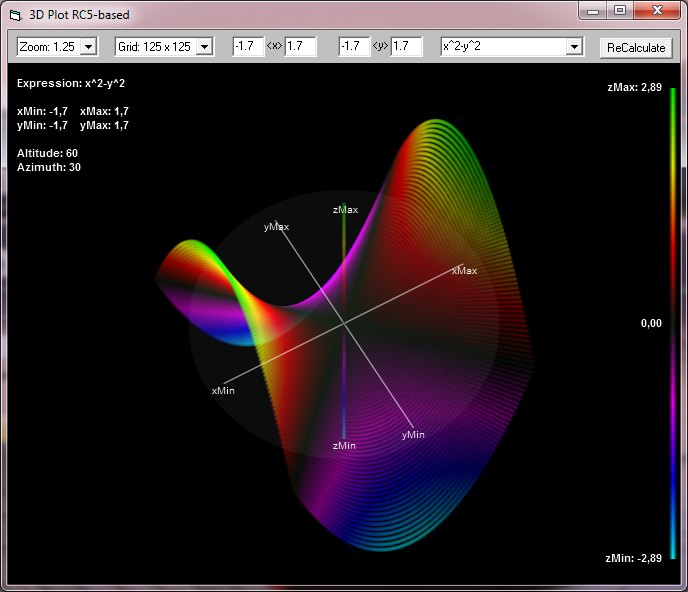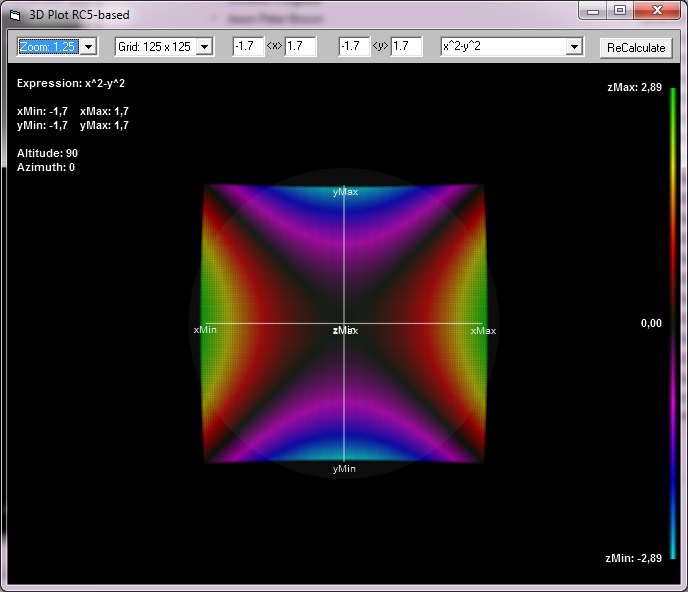Just another Demo, which applies antialiased and semitransparent Drawing-commands in a somewhat similar way as the "Bezier-Art"-Demo here:
http://www.vbforums.com/showthread.p...ezier-Art-quot
But in a perhaps more useful (or practical) fashion...
The implementation allows for a few nice things as rotation around the Z-axis (Azimuth) - as well as changing the Altitude per Mouse (the height above the x-y-plane).
There's a few predefined Formulas in the appropriate Combo-Box, but you can type in your own stuff as well.
To support symmetrical Surfaces as e.g. spheres or "donuts", the Plotter allows also the formula: z² = f(x,y) (as an alternative to the usual z = f(x,y)).
But here's a few screen-shots which are far more telling I assume:
![]()
This is the wellknown "saddle":
![]()
And this is the same saddle-plot. but now with an altitude of 90 degrees (full Top-View):
![]()
Here a few more shots, but only as "normal links", to not clutter the posting with too many images:
http://vbRichClient.com/Downloads/3dSrfPlot1.jpg
http://vbRichClient.com/Downloads/3dSrfPlot4.jpg
http://vbRichClient.com/Downloads/3dSrfPlot5.jpg
http://vbRichClient.com/Downloads/3dSrfPlot6.jpg
Ok, finally the Source-code-link (as said, dependent on the RC5-libs which one can download from vbRichClient.com):
(only 7KB, so it's a pretty small code-base to study).
Have fun with it.
Olaf
http://www.vbforums.com/showthread.p...ezier-Art-quot
But in a perhaps more useful (or practical) fashion...
The implementation allows for a few nice things as rotation around the Z-axis (Azimuth) - as well as changing the Altitude per Mouse (the height above the x-y-plane).
There's a few predefined Formulas in the appropriate Combo-Box, but you can type in your own stuff as well.
To support symmetrical Surfaces as e.g. spheres or "donuts", the Plotter allows also the formula: z² = f(x,y) (as an alternative to the usual z = f(x,y)).
But here's a few screen-shots which are far more telling I assume:

This is the wellknown "saddle":

And this is the same saddle-plot. but now with an altitude of 90 degrees (full Top-View):

Here a few more shots, but only as "normal links", to not clutter the posting with too many images:
http://vbRichClient.com/Downloads/3dSrfPlot1.jpg
http://vbRichClient.com/Downloads/3dSrfPlot4.jpg
http://vbRichClient.com/Downloads/3dSrfPlot5.jpg
http://vbRichClient.com/Downloads/3dSrfPlot6.jpg
Ok, finally the Source-code-link (as said, dependent on the RC5-libs which one can download from vbRichClient.com):
(only 7KB, so it's a pretty small code-base to study).
Have fun with it.
Olaf
